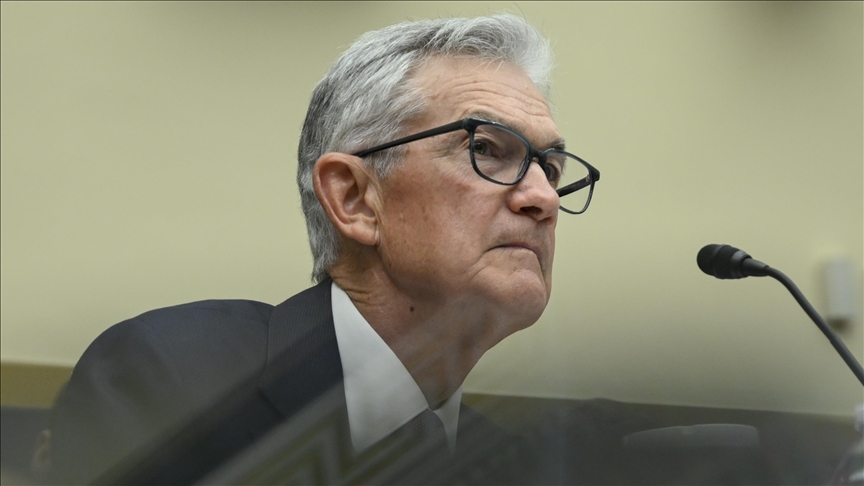 Jerome Powell, Chairman of the U.S. Federal Reserve
Jerome Powell, Chairman of the U.S. Federal Reserve
- Jerome Powell says Fed closer to objective of having 'ample' reserves available for banks
- Central bank officials worried about tightening labor market, how it is distorting employment-inflation risk balance, says Powell
ISTANBUL
US Federal Reserve Chair Jerome Powell hinted Tuesday that the central bank is getting close to stopping the reduction of the size of its bond holdings.
But he did not provide a long-term forecast for the direction of interest rates.
Powell gave a detailed speech on the Fed's stance on "quantitative tightening," or the initiative to lower the more than $6 trillion in securities it has on its balance sheet, while addressing the National Association for Business Economics conference in Philadelphia.
He did not specify when the program would end, but he did note that there are signs the Fed is getting closer to its objective of having "ample" reserves available for banks.
“Our long-stated plan is to stop balance sheet runoff when reserves are somewhat above the level we judge consistent with ample reserve conditions,” said Powell. “We may approach that point in coming months, and we are closely monitoring a wide range of indicators to inform this decision.”
The Fed strives for "abundant" reserves during times of financial strain so banks can obtain liquidity and maintain the economy. To keep too much capital from leaking around the system, the Fed strives for "ample" reserves as circumstances change, according to the CNBC network.
The central bank's extensive purchases of Treasuries and mortgage-backed securities during the coronavirus epidemic caused the balance sheet to grow to nearly $9 trillion.
To tighten one aspect of monetary policy, the Fed has been progressively permitting the maturing proceeds of securities to roll off the balance sheet since the middle of 2022. How far the Fed needed to go was the question, and Powell's remarks suggest that the end is near.
Overall state of economy
Powell largely adhered to the recent narrative on interest rates, which is that officials are worried about the tightening labor market and how it is distorting the employment-inflation risk balance.
“While the unemployment rate remained low through August, payroll gains have slowed sharply, likely in part due to a decline in labor force growth due to lower immigration and labor force participation,” Powell stated. “In this less dynamic and somewhat softer labor market, the downside risks to employment appear to have risen.”
He said that the Fed responded to the challenges with a 25-basis point rate cut. While markets expect a further rate cut at a meeting later this month, Powell did not give a hint at the possibility.
In regard to the federal government shutdown and the data blackout of economic data, Powell said the central bank is continuing to analyze conditions based on available data.
“Based on the data that we do have, it is fair to say that the outlook for employment and inflation does not appear to have changed much since our September meeting four weeks ago,” he said. “Data available prior to the shutdown, however, show that growth in economic activity may be on a somewhat firmer trajectory than expected.”
Powell added that available data indicate tariffs, rather than underlying inflation pressures, are mostly to blame for the rise in goods prices.








